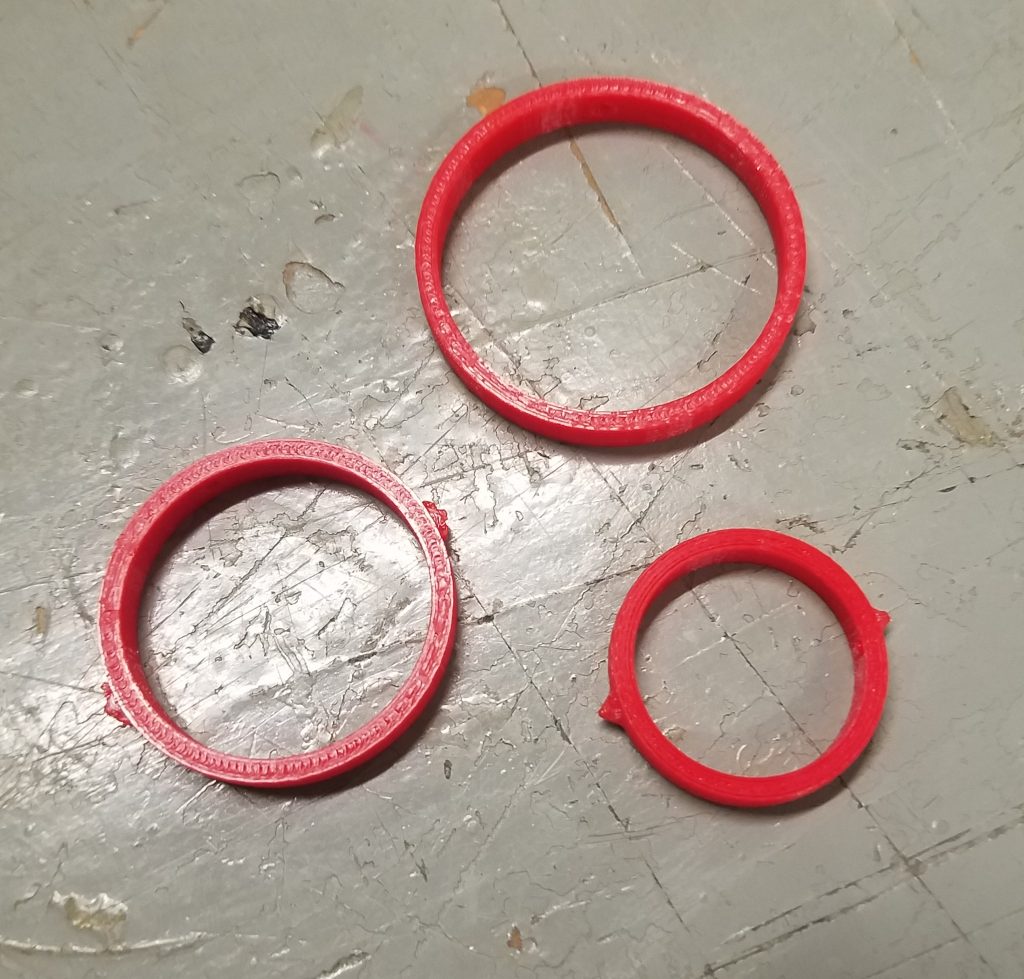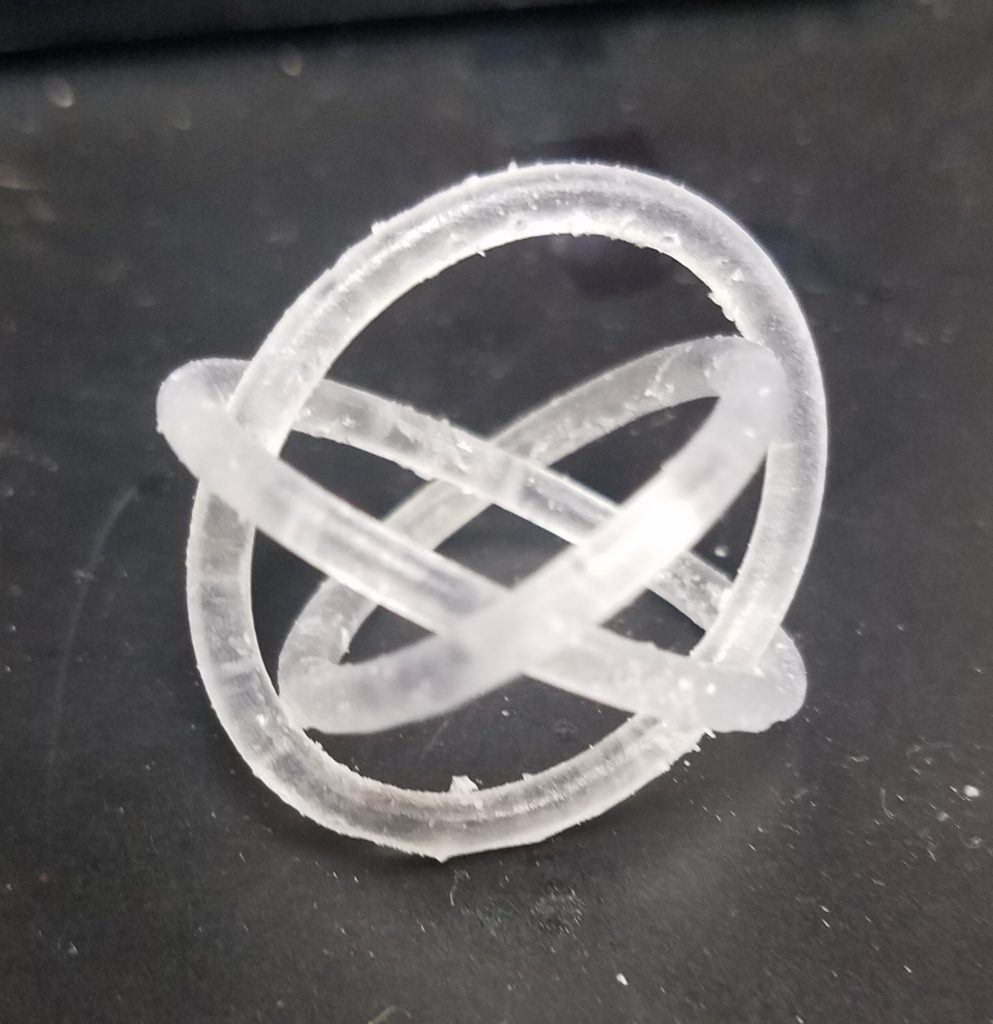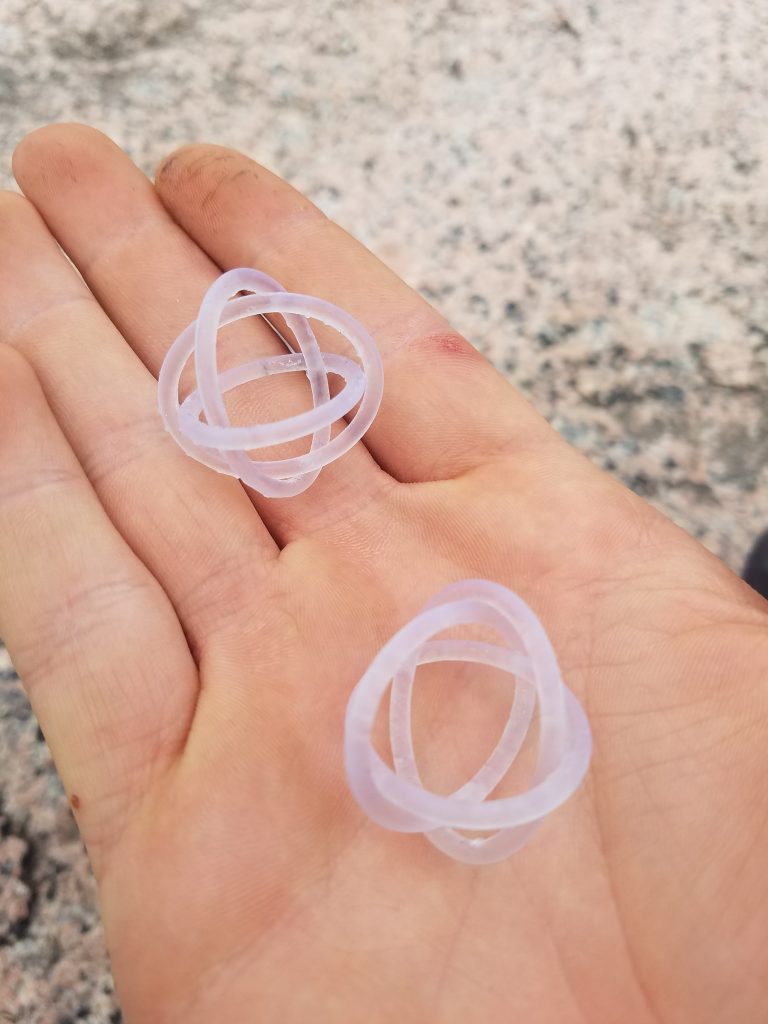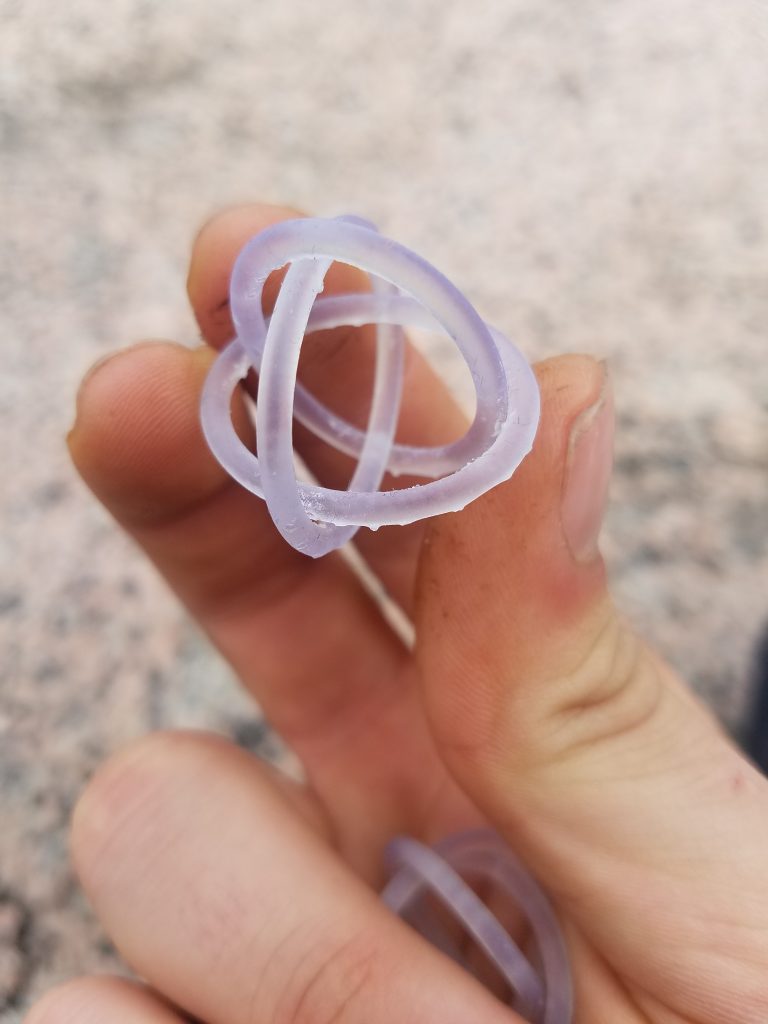On this week of ENGI 210, I tackle the fickle and powerful 3D printer, one of the most sought-after tools in the OEDK. Going into this project, I didn’t have a great relationship with 3D printing as a technology. Even still, I find it overused when other tools or technologies would be better suited for the job. However, this assignment was something special: create an impossible object. There’s no printing cylinders and spheres here, this is something that can only be created with 3D printing. Let’s jump on in
Attempt 1: Interlocking Moving Parts
My first attempt at a piece was a spinning gyroscope. The interlocking rings print as one unit, but they have small joints to allow them to be held inside each other and spin. I chose this shape because
- It is super fun to play with
- It demonstrates the ability of the 3D printer to print complete interlocking systems as a single print
- It is relatively simple and flat, being able to be quickly printed on FDM printers.
- Concentric spinning rings are kind of my thing
Unfortunately, after 3 or 4 attempts, this attempt went up in smoke. The main problem was the small size of the part and relative inaccuracy of the FDM printers outside the Wet Lab. Tolerances between moving parts became an issue, and rings fell apart very quickly. I pivoted to the next model.
Attempt 2: In SLA We Trust
After massive deliberation, I chose a model of Borromean rings as my next 3D print. In this set of 3 rings, no two are linked, but the system as a whole remains together. Unlike the previous attempt, however, I’d be taking this print to the Wet Lab. Talking with lab techs, the Formlabs printer, a stereolithography printer, is much better at printing small details and support structures. This is perfect for both impossible objects with small details and for tiny objects to fit into gumball cases. I chose the Borromean rings for several reasons.
- They represent an impossible object in the traditional sense, as a paradoxical shape.
- The three interlocking rings can only be 3D printed, not made using traditional means
- The small intricate rings made a perfect testing ground for SLA technology
- It’s also fun to play with
The process for this print was a bit more involved than a standard FDM print, but the results were very worth it. After pulling the print off the bed, I soaked it in several chemical baths to remove excess resin and cure the plastic further. I then trimmed off the branchlike support structure, a much better support than the normal scaffolding used. These parts came out better than anything I’ve ever 3D printed before. The Formlab printer had no trouble with small geometry, and the supports were executed splendidly.
To finish the part past the basic chemical bath, I used a few extra steps. First, I sanded down the contact points with support material. This helped out with the general feel and quality of the parts, and cut down on the rings catching on these non-smooth parts. I then consulted Danny for some expertise, and he told me to just put the pieces in a glass of water and leave them in the sun. This would cure the plastic further for that final finish. Surprisingly, this simple step took two attempts, as the wind blew over my first water reservoir. After this step was completed, however, my Borromean rings were looking smooth and cured.
Overall, I got pretty frustrated with the FDM printers for this project, but I loved using the SLA printer. The Flashforge and Printrbots are never exactly precise, and the same print can go very differently just based on how the printer is feeling. I loved getting to use the Form 2, though. It was my first experience with a Wet Lab printer, and the quality difference for small, intricate pieces is very real. I will definitely consider SLA for smaller or more complex pieces in the future.






